

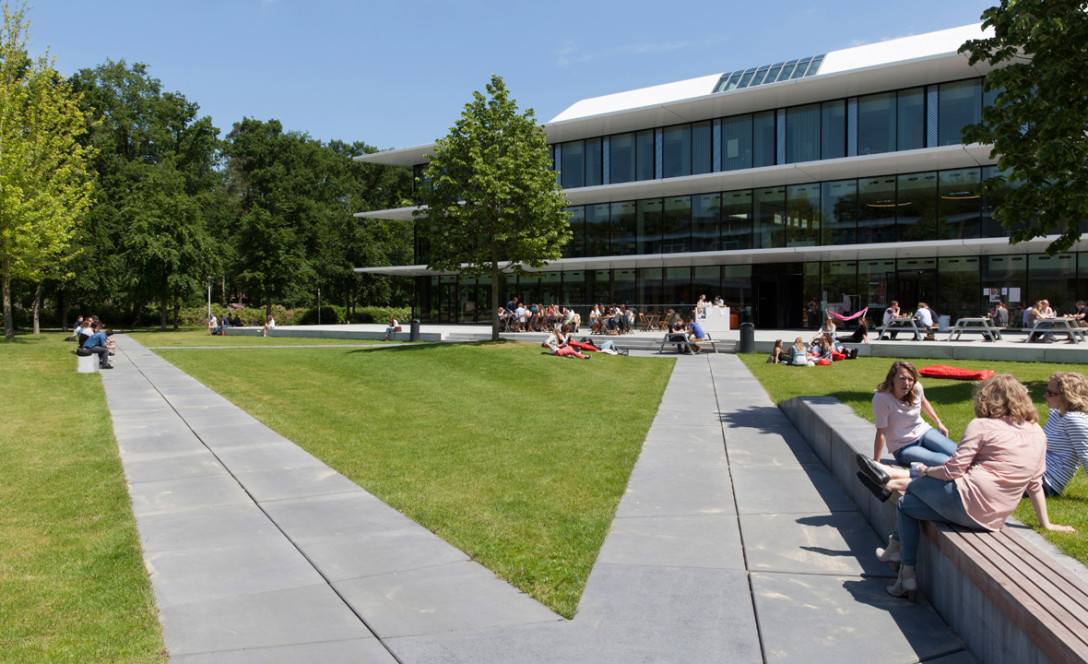
Radboud University Nijmegen is situated on the former Heyendaal landholding, south of the city centre. The current location of the university buildings forms a barrier in a green milieu that does not do justice to the history of the property. The buildings are outdated and no longer meet the requirements of a future-oriented university. With the building of a new Faculty of Law, the university has begun redevelopment of the campus. Karres en Brands has prepared the urban and landscape concept that serves as the basis for the redevelopment of the campus. The plan is based on the original landholding and the historical lines of the forest park. It provides a transformation towards a green campus, with independent buildings that stand in a varied, wooded park: a variety of green spaces is created between the buildings, connected by a system of footpaths.
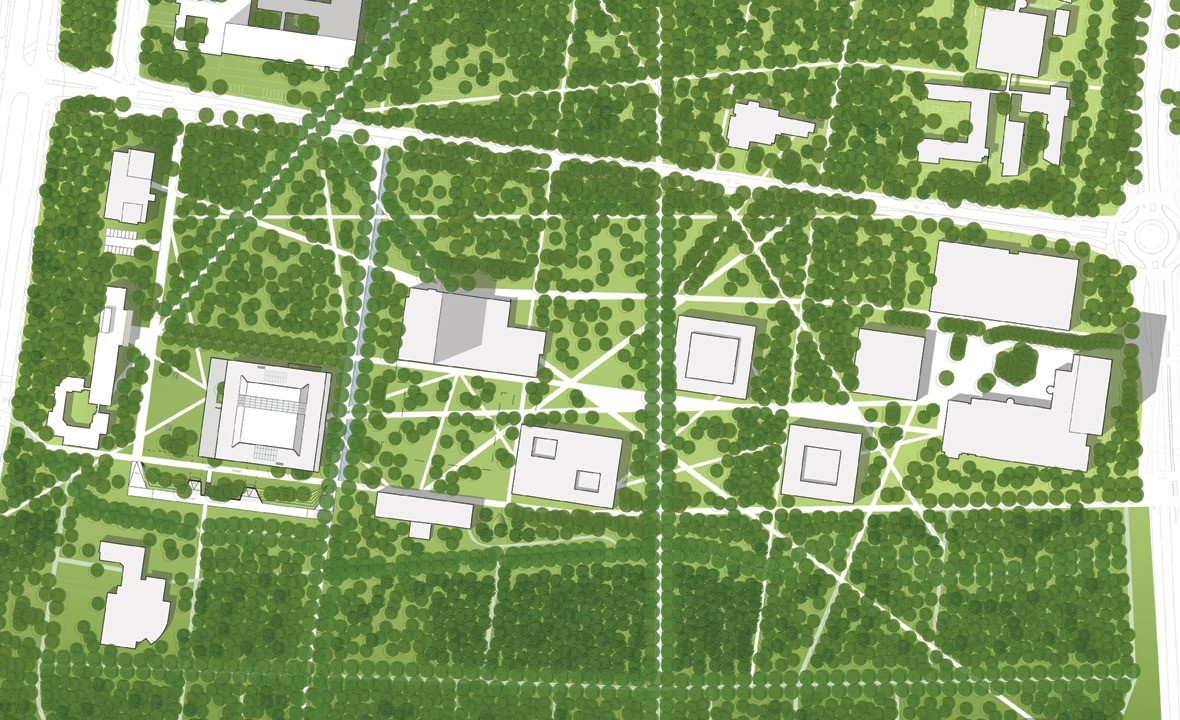
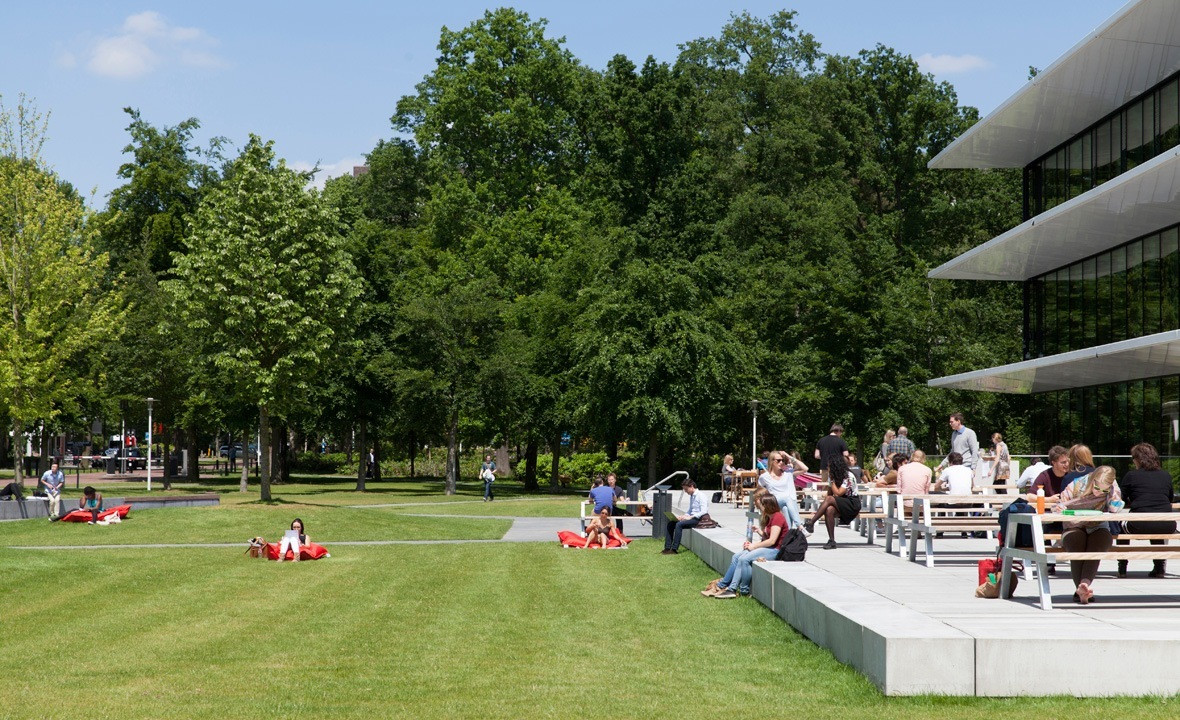
The first phase of the redevelopment is the Grotius Building, the new Faculty of Law, designed by Benthem Crouwel Architects and named after Hugo Grotius. It is a compactly formed building, which emphasises the scenic quality of the campus and, in a subdued manner, is suitable to the green surroundings. The car and bicycle parking and logistics are inserted underground, and part of the building programme is also realised below ground level. The underground car park has a green roof, whereby the campus landscape continues uninterrupted.
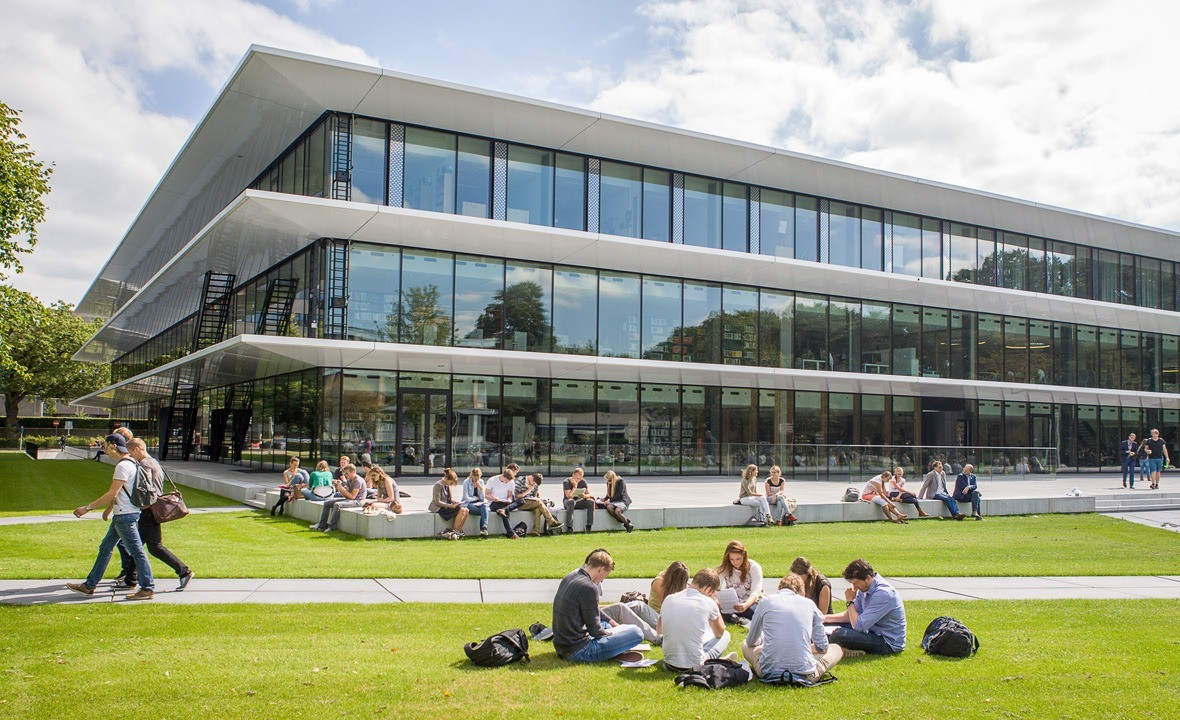
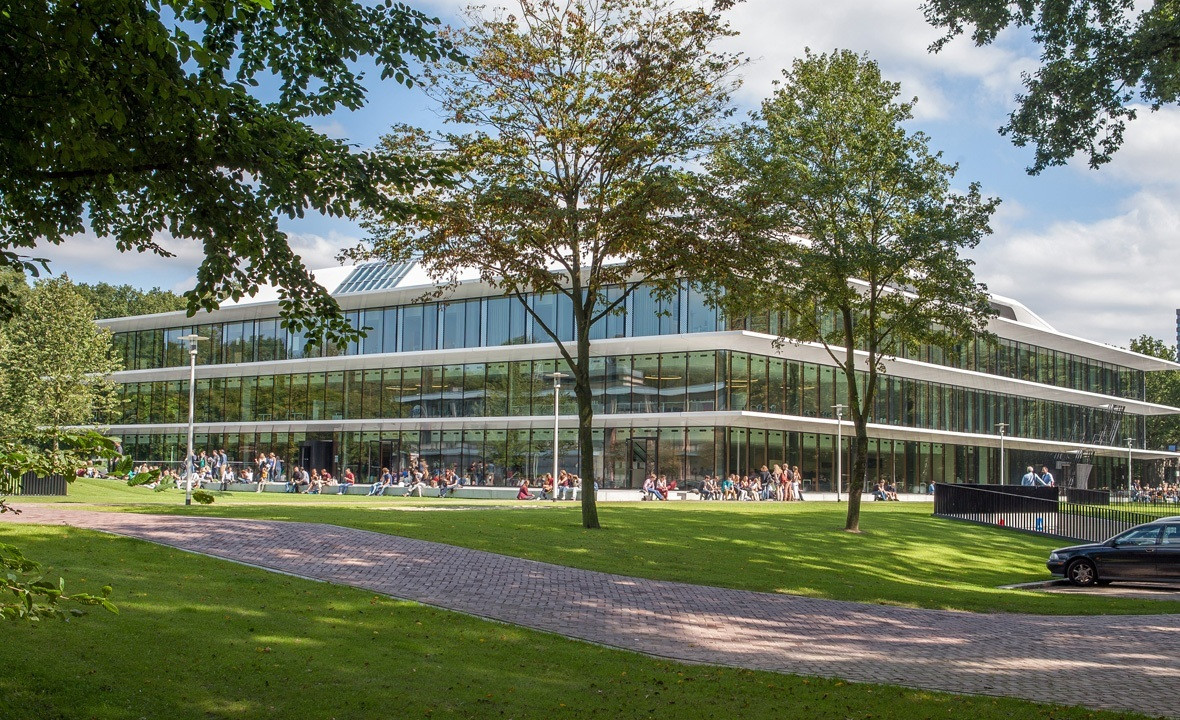
A system of diagonal paths establishes new links between the new building, the surrounding structures, and the environs. The historical lines of the old landholding are interwoven with new connections and places. On the sunny side of the new building, adjacent to the restaurant’s large terrace, an important meeting spot is created for students, faculty, and staff.

The pathways are composed of a modular system of concrete slabs, by which a variety of widths can be realised. This system ensures flexibility in the phasing of the entire campus transformation: the paths can be easily modified or moved. Raised borders are incorporated along the walkways, which serve as a place to sit, or as a way to distinguish entry situations.

The planting scheme restores the character of the old estate and makes its old scenic lines legible once more. Existing avenue structures and trees are spared, replanted or supplemented by trees with large coverage, such as beech, oak, and birch. At the entryways, special vegetation types are incorporated as an accent, and monumental lime trees are planted on the roof garden with unique habitat features. On the basis of the landscaping concept, a green management plan has been prepared that provides for the restoration and transformation of existing woodlots following clear characteristics that connect the original property with the new campus.

| Location. | Nijmegen, Netherlands |
|---|---|
| Assignment | Design outdoor space for university campus |
| Size | 4.5 hectare |
| Design | 2011 – 2012 |
| Construction | 2013 – 2014 |
| Status | Realised |
| Client | Radboud Universiteit Nijmegen |
| In collaboration with | Benthem Crouwel Architecten, SmitsRinsma |
| Copyright images | Radboud Universiteit / Joeri Borst |
| Award | 2015 Architecture Prize Nijmegen |